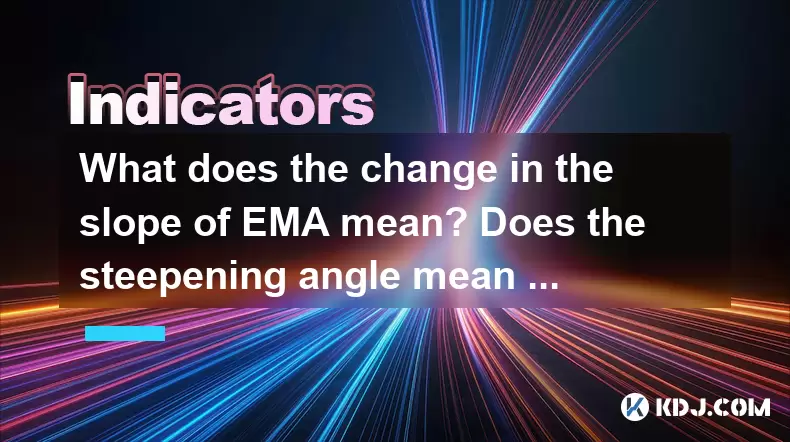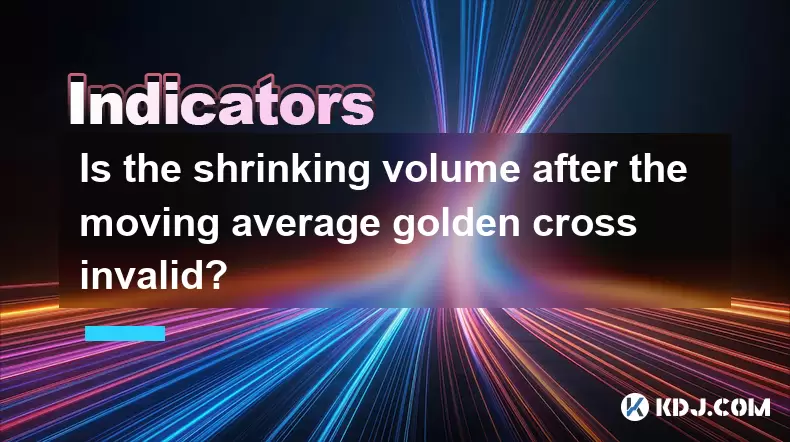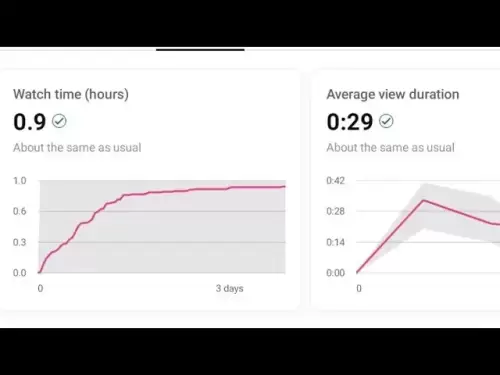-
 Bitcoin
Bitcoin $102,838.3669
-0.64% -
 Ethereum
Ethereum $2,288.9548
-5.70% -
 Tether USDt
Tether USDt $1.0003
0.01% -
 XRP
XRP $2.0782
-2.11% -
 BNB
BNB $632.3292
-1.65% -
 Solana
Solana $136.1959
-2.98% -
 USDC
USDC $1.0000
0.01% -
 TRON
TRON $0.2726
-0.11% -
 Dogecoin
Dogecoin $0.1566
-4.06% -
 Cardano
Cardano $0.5552
-5.18% -
 Hyperliquid
Hyperliquid $34.2720
-1.05% -
 Bitcoin Cash
Bitcoin Cash $466.8638
-1.20% -
 Sui
Sui $2.5776
-5.75% -
 UNUS SED LEO
UNUS SED LEO $8.9685
0.02% -
 Chainlink
Chainlink $12.0304
-5.11% -
 Stellar
Stellar $0.2375
-2.47% -
 Avalanche
Avalanche $16.9243
-3.74% -
 Toncoin
Toncoin $2.8539
-2.82% -
 Shiba Inu
Shiba Inu $0.0...01091
-4.04% -
 Litecoin
Litecoin $81.4197
-2.58% -
 Hedera
Hedera $0.1374
-5.25% -
 Monero
Monero $310.1410
-1.30% -
 Ethena USDe
Ethena USDe $1.0006
0.01% -
 Dai
Dai $1.0000
0.00% -
 Polkadot
Polkadot $3.2843
-5.48% -
 Bitget Token
Bitget Token $4.2110
-1.76% -
 Uniswap
Uniswap $6.4977
-7.96% -
 Pepe
Pepe $0.0...09321
-7.31% -
 Pi
Pi $0.5074
-6.27% -
 Aave
Aave $234.8342
-5.61%
What does the change in the slope of EMA mean? Does the steepening angle mean that the trend is accelerating?
The slope of the EMA can indicate trend strength; a steepening angle may signal an accelerating trend, but traders should use additional indicators for confirmation.
May 27, 2025 at 09:14 pm

The Exponential Moving Average (EMA) is a popular technical indicator used by traders and investors in the cryptocurrency market to identify trends and potential trading opportunities. The slope of the EMA can provide valuable insights into the strength and direction of a trend. In this article, we will explore what changes in the slope of the EMA mean and whether a steepening angle indicates an accelerating trend.
Understanding the EMA
The Exponential Moving Average (EMA) is a type of moving average that places more weight on recent prices, making it more responsive to new information compared to the Simple Moving Average (SMA). The EMA is calculated using a specific formula that incorporates a smoothing factor, allowing it to react more quickly to price changes. This responsiveness makes the EMA a valuable tool for traders looking to identify trends in the volatile cryptocurrency market.
What Does the Slope of the EMA Indicate?
The slope of the EMA is a visual representation of the rate at which the average price is changing over time. A positive slope indicates an upward trend, while a negative slope suggests a downward trend. The steeper the slope, the stronger the trend is perceived to be. Traders often use the slope of the EMA to gauge the momentum of a trend and make informed trading decisions.
Interpreting Changes in the Slope of the EMA
Changes in the slope of the EMA can provide valuable insights into the dynamics of a trend. A flattening slope may indicate that the trend is losing momentum and could potentially reverse. Conversely, a steepening slope suggests that the trend is gaining strength and accelerating. However, it is essential to consider other factors and indicators when interpreting changes in the slope of the EMA, as relying solely on this metric can lead to false signals.
Does a Steepening Angle Mean the Trend is Accelerating?
A steepening angle of the EMA is often interpreted as a sign that the trend is accelerating. When the EMA begins to rise or fall at a steeper angle, it suggests that the average price is changing more rapidly, indicating increased momentum in the direction of the trend. Traders may view this as an opportunity to enter or add to positions in the direction of the trend, anticipating further price movement.
However, it is crucial to consider the context in which the steepening angle occurs. A sudden steepening of the EMA could be a result of a short-term price spike or a reaction to news events, rather than a genuine acceleration of the trend. Therefore, traders should use additional indicators and analysis techniques to confirm the strength and sustainability of the trend before making trading decisions based solely on the steepening angle of the EMA.
Using the EMA Slope in Trading Strategies
Traders can incorporate the slope of the EMA into their trading strategies to identify potential entry and exit points. Here are some common ways to use the EMA slope in trading:
- Trend Following: Traders can use the slope of the EMA to identify the direction of the trend and enter trades in the same direction. For example, if the EMA has a positive slope, traders may look for opportunities to buy or go long on a cryptocurrency.
- Trend Reversals: A flattening or changing slope of the EMA can signal a potential trend reversal. Traders may use this information to exit existing positions or prepare for a trade in the opposite direction.
- Momentum Trading: A steepening angle of the EMA can indicate increasing momentum, which may be attractive to momentum traders looking to capitalize on short-term price movements.
Combining the EMA Slope with Other Indicators
While the slope of the EMA can provide valuable insights into trend strength and momentum, it is often more effective when used in conjunction with other technical indicators. Some common indicators that traders may use alongside the EMA slope include:
- Relative Strength Index (RSI): The RSI can help traders identify overbought or oversold conditions, which can be useful in confirming the strength of a trend indicated by the EMA slope.
- Moving Average Convergence Divergence (MACD): The MACD can provide additional confirmation of trend direction and momentum, helping traders make more informed decisions based on the slope of the EMA.
- Volume Indicators: Volume can provide insight into the strength of a trend. Traders may look for increasing volume alongside a steepening EMA slope as a sign of a strong, accelerating trend.
Practical Example of Using the EMA Slope
Let's consider a practical example of how a trader might use the slope of the EMA to make trading decisions in the cryptocurrency market:
- Step 1: A trader observes that the 20-day EMA of Bitcoin (BTC) has been steadily rising with a positive slope, indicating an uptrend.
- Step 2: The trader notices that the slope of the EMA begins to steepen, suggesting that the uptrend is accelerating.
- Step 3: To confirm the strength of the trend, the trader checks the RSI, which is not in overbought territory, and the MACD, which shows a bullish crossover.
- Step 4: Based on this analysis, the trader decides to enter a long position on BTC, anticipating further price appreciation.
- Step 5: The trader sets a stop-loss order below a recent swing low to manage risk and protect against a potential trend reversal.
- Step 6: As the trend continues, the trader monitors the slope of the EMA and other indicators to determine when to exit the position and take profits.
Frequently Asked Questions
Q1: Can the slope of the EMA be used to predict future price movements?
While the slope of the EMA can provide insights into the current strength and direction of a trend, it is not a predictive tool. Traders should use the EMA slope in conjunction with other analysis techniques and risk management strategies to make informed trading decisions.
Q2: What time frame is best for using the EMA slope in cryptocurrency trading?
The optimal time frame for using the EMA slope depends on a trader's individual trading style and goals. Short-term traders may prefer to use shorter time frames, such as the 9-day or 20-day EMA, while longer-term investors may find the 50-day or 200-day EMA more suitable. It is essential to test different time frames and adapt the approach based on market conditions.
Q3: How can traders avoid false signals when using the EMA slope?
To avoid false signals, traders should consider the following:
- Use multiple time frames to confirm the trend direction and strength.
- Combine the EMA slope with other technical indicators, such as RSI and MACD, to validate signals.
- Be aware of market news and events that could cause short-term price fluctuations and impact the EMA slope.
- Implement proper risk management strategies, such as setting stop-loss orders, to protect against potential losses from false signals.
Q4: Is the slope of the EMA more reliable in trending markets or ranging markets?
The slope of the EMA is generally more reliable in trending markets, where it can effectively identify the direction and strength of the trend. In ranging or sideways markets, the EMA slope may generate more false signals, as the price oscillates between support and resistance levels. Traders should be cautious when using the EMA slope in ranging markets and consider other indicators that are better suited for these conditions.
Disclaimer:info@kdj.com
The information provided is not trading advice. kdj.com does not assume any responsibility for any investments made based on the information provided in this article. Cryptocurrencies are highly volatile and it is highly recommended that you invest with caution after thorough research!
If you believe that the content used on this website infringes your copyright, please contact us immediately (info@kdj.com) and we will delete it promptly.
- Bitcoin in Europe: France's Budding Romance with BTC
- 2025-06-22 12:45:12
- BNB Chain Altcoin Meltdown: Navigating the Storm and Spotting Opportunities
- 2025-06-22 12:45:12
- Inherited Riches: Rare Coin Collection Valued at £6,000 – Is Your Change Worth a Fortune?
- 2025-06-22 12:25:12
- Fiat-Backed Stablecoins, Tokenized Treasuries, and DeFi: A New York Minute on the Future of Finance
- 2025-06-22 12:25:12
- Pumpfun Token Launch Faces Crypto Backlash: A Billion-Dollar Gamble?
- 2025-06-22 12:50:12
- Pepe Coin Price Prediction: Crash Risk and What's Next for Frog-Themed Crypto
- 2025-06-22 13:05:13
Related knowledge

Does the second surge in the RSI overbought zone induce more?
Jun 22,2025 at 08:35am
Understanding the RSI Overbought ZoneThe Relative Strength Index (RSI) is a momentum oscillator commonly used in technical analysis to measure the speed and change of price movements. It ranges from 0 to 100, with values above 70 typically considered overbought and values below 30 considered oversold. When the RSI enters the overbought zone for the firs...

Does the sudden contraction of ATR indicate the end of the trend?
Jun 20,2025 at 11:14pm
Understanding ATR and Its Role in Technical AnalysisThe Average True Range (ATR) is a technical indicator used to measure market volatility. Developed by J. Welles Wilder, ATR calculates the average range of price movement over a specified period, typically 14 periods. It does not indicate direction—only volatility. Traders use ATR to gauge how much an ...

Is it invalid if the DMI crosses but the ADX does not expand?
Jun 21,2025 at 09:35am
Understanding the DMI and ADX RelationshipIn technical analysis, the Directional Movement Index (DMI) consists of two lines: +DI (Positive Directional Indicator) and -DI (Negative Directional Indicator). These indicators are used to determine the direction of a trend. When +DI crosses above -DI, it is often interpreted as a bullish signal, while the opp...

How to filter false signals when the SAR indicator frequently flips?
Jun 21,2025 at 08:43pm
Understanding the SAR Indicator and Its BehaviorThe SAR (Stop and Reverse) indicator is a popular technical analysis tool used in cryptocurrency trading to identify potential reversals in price movement. It appears as a series of dots placed either above or below the price chart, signaling bullish or bearish trends. When the dots are below the price, it...

Is the trend continuation when the Williams indicator is oversold but there is no rebound?
Jun 20,2025 at 11:42pm
Understanding the Williams %R IndicatorThe Williams %R indicator, also known as the Williams Percent Range, is a momentum oscillator used in technical analysis to identify overbought and oversold levels in price movements. It typically ranges from 0 to -100, where values above -20 are considered overbought and values below -80 are considered oversold. T...

Is the shrinking volume after the moving average golden cross invalid?
Jun 22,2025 at 10:42am
Understanding the Moving Average Golden Cross in CryptocurrencyIn the world of cryptocurrency trading, technical indicators play a crucial role in decision-making. One such indicator is the moving average golden cross, which occurs when a short-term moving average crosses above a long-term moving average, typically signaling a bullish trend. This event ...

Does the second surge in the RSI overbought zone induce more?
Jun 22,2025 at 08:35am
Understanding the RSI Overbought ZoneThe Relative Strength Index (RSI) is a momentum oscillator commonly used in technical analysis to measure the speed and change of price movements. It ranges from 0 to 100, with values above 70 typically considered overbought and values below 30 considered oversold. When the RSI enters the overbought zone for the firs...

Does the sudden contraction of ATR indicate the end of the trend?
Jun 20,2025 at 11:14pm
Understanding ATR and Its Role in Technical AnalysisThe Average True Range (ATR) is a technical indicator used to measure market volatility. Developed by J. Welles Wilder, ATR calculates the average range of price movement over a specified period, typically 14 periods. It does not indicate direction—only volatility. Traders use ATR to gauge how much an ...

Is it invalid if the DMI crosses but the ADX does not expand?
Jun 21,2025 at 09:35am
Understanding the DMI and ADX RelationshipIn technical analysis, the Directional Movement Index (DMI) consists of two lines: +DI (Positive Directional Indicator) and -DI (Negative Directional Indicator). These indicators are used to determine the direction of a trend. When +DI crosses above -DI, it is often interpreted as a bullish signal, while the opp...

How to filter false signals when the SAR indicator frequently flips?
Jun 21,2025 at 08:43pm
Understanding the SAR Indicator and Its BehaviorThe SAR (Stop and Reverse) indicator is a popular technical analysis tool used in cryptocurrency trading to identify potential reversals in price movement. It appears as a series of dots placed either above or below the price chart, signaling bullish or bearish trends. When the dots are below the price, it...

Is the trend continuation when the Williams indicator is oversold but there is no rebound?
Jun 20,2025 at 11:42pm
Understanding the Williams %R IndicatorThe Williams %R indicator, also known as the Williams Percent Range, is a momentum oscillator used in technical analysis to identify overbought and oversold levels in price movements. It typically ranges from 0 to -100, where values above -20 are considered overbought and values below -80 are considered oversold. T...

Is the shrinking volume after the moving average golden cross invalid?
Jun 22,2025 at 10:42am
Understanding the Moving Average Golden Cross in CryptocurrencyIn the world of cryptocurrency trading, technical indicators play a crucial role in decision-making. One such indicator is the moving average golden cross, which occurs when a short-term moving average crosses above a long-term moving average, typically signaling a bullish trend. This event ...
See all articles
























































































